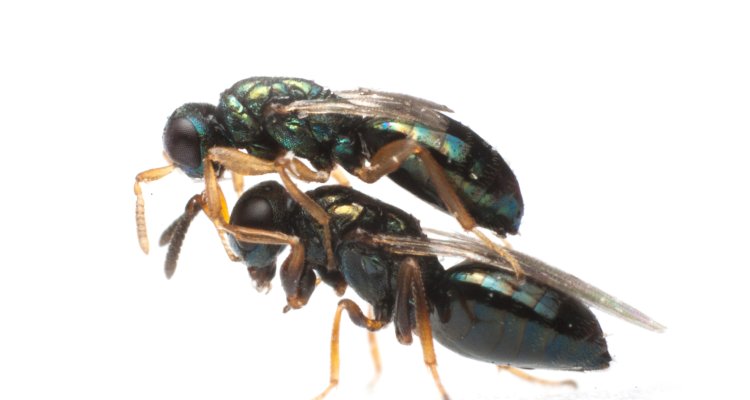
Eveline Verhulst's research
My mission is to understand why the appearance of two sexes from the same species is often so diverse and how this sexual dimorphism evolves. Insects are one notable class of organisms that showcases extreme sexually dimorphic traits. Insects also have an astounding diversity in their molecular pathway that determines the sex during early development, the sex determination cascade. However, the net result is always the same: male or female development. The evolutionary forces underlying this diversity are still poorly understood.
However, all insects have the same gene, called doublesex, that regulates their sexual development and morphology. Doublesex is a transcription factor and responsible for regulating all the different sexually dimorphic traits that can be observed in nature. However, we still have limited understanding of the molecular mechanisms that underlie the huge dimorphic differences that we can see in insects. Do genes come and go, or do all insects have more or less the same set of genes and is there a difference in the regulation of these genes?
Over 40 years ago, King and Wilson reported that enormous differences in phenotype and behaviour are often not due to differences in protein sequence. They discovered that the evolution of gene regulation is a key player in adaptation and speciation. We have now gained first insights into this regulatory evolution and its players, but we are a long way from having a comprehensive understanding of the relation between transcription factor protein evolution and the continuously changing genetic architecture of their binding sites that regulate target gene expression.
In my research I aim to get a deeper understanding of the way evolution shapes molecular pathways that result in a bewildering biodiversity. My main research interests are:
1) unraveling the evolution of sex determination cascades, an important developmental pathway; to understand the enormous diversity in sex determining mechanisms throughout the animal kingdom.
2) the interaction of doublesex with its target genes, the highly conserved transcription factor at the bottom of the cascade, to understand how this ultimately result in rapid evolution of sexual dimorphic traits.
In addition: I'm involved in different projects that study the fundamentals of using parasitoid wasps in biological control and integrated pest management.
However, all insects have the same gene, called doublesex, that regulates their sexual development and morphology. Doublesex is a transcription factor and responsible for regulating all the different sexually dimorphic traits that can be observed in nature. However, we still have limited understanding of the molecular mechanisms that underlie the huge dimorphic differences that we can see in insects. Do genes come and go, or do all insects have more or less the same set of genes and is there a difference in the regulation of these genes?
Over 40 years ago, King and Wilson reported that enormous differences in phenotype and behaviour are often not due to differences in protein sequence. They discovered that the evolution of gene regulation is a key player in adaptation and speciation. We have now gained first insights into this regulatory evolution and its players, but we are a long way from having a comprehensive understanding of the relation between transcription factor protein evolution and the continuously changing genetic architecture of their binding sites that regulate target gene expression.
In my research I aim to get a deeper understanding of the way evolution shapes molecular pathways that result in a bewildering biodiversity. My main research interests are:
1) unraveling the evolution of sex determination cascades, an important developmental pathway; to understand the enormous diversity in sex determining mechanisms throughout the animal kingdom.
2) the interaction of doublesex with its target genes, the highly conserved transcription factor at the bottom of the cascade, to understand how this ultimately result in rapid evolution of sexual dimorphic traits.
In addition: I'm involved in different projects that study the fundamentals of using parasitoid wasps in biological control and integrated pest management.